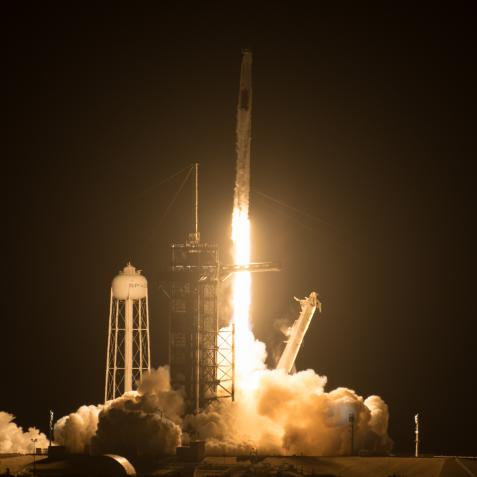
NASA/ISS
Expedition 64 to Return Home on April 17
After 185 days in space aboard the ISS, NASA astronaut Kate Rubins, Roscosmos cosmonaut Sergey Ryzhikov, and Roscosmos cosmonaut Sergey Kud-Sverchkov are coming home. They are scheduled to land back on Earth in their Soyuz MS-17 spacecraft at 12:56A EDT on Saturday, April 17.
On October 14, 2020, Expedition 64 launched to the International Space Station from the Baikonur Cosmodrome in Kazakhstan. The three space explorers have spent about six months aboard the orbital station. It is time for the crew to return home.
Expedition 64 to Launch on October 14
One NASA astronaut and two Roscosmos cosmonauts of Expedition 64 are scheduled to launch to the ISS on Wednesday, October 14 at 1:45AM ET for a six month stay. Let’s learn the details!
Rubins, Ryzhikov, and Kud-Sverchkov, will close the hatch to their Soyuz spacecraft at about 6:10P EDT before undocking from the International Space Station’s Poisk module at 9:34P EDT on Friday, April 16. After a three-hour trip and southeast of the small town of Dzhezkazgan, the three members of Expedition 64 are scheduled to touchdown. Rubins will then return to NASA’s Johnson Space Center in Houston.
Kate Rubins of @NASA_Astronauts and her two cosmonaut crew mates begin their voyage home on Friday, April 16. See the full schedule of live NASA TV coverage of Soyuz hatch closure, undocking, and landing: https://t.co/JZmoHbY3vv pic.twitter.com/eNgW8RxgZA
— NASA (@NASA) April 13, 2021
Crew-1 will remain aboard the ISS until the next crew arrives on April 23. The members of Expedition 65 include Shane Kimbrough (NASA), Megan McArthur (NASA), Akihiko Hoshide (JAXA), and Thomas Pesquet (ESA) of the NASA and SpaceX Crew-2 mission. Three members of Expedition 65 are already aboard the ISS. NASA astronaut, Mark Vande Hei, Roscosmos cosmonaut Oleg Novitskiy, and Roscosmos cosmonaut Pyotr Dubrov arrived at the orbital station on April 9.

NASA
(From left) The Expedition 64 crew is returning to Earth today as the SpaceX Crew-2 astronauts prepare for an April 22 launch to the station from Florida.
NASA TV is covering the landing of Expedition 64.



















